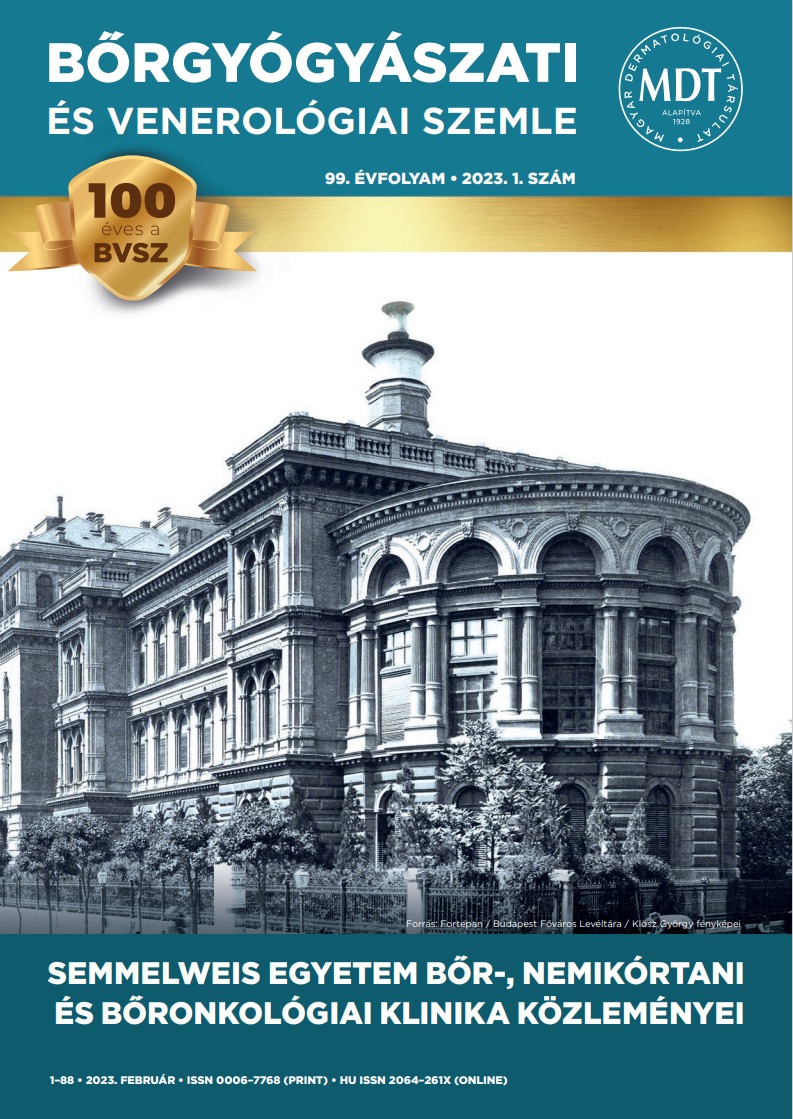Experiences with Sézary syndrome. Review of 23 cases treated at the Department of Dermatology, Venereology and Dermatooncology of the Semmelweis University, Budapest
Abstract
Sézary syndrome is a primary cutaneous T-cell lymphoma (CTCL) with severe clinical manifestations characterized by erythroderma, lymph node and blood involvement. In our retrospective database-based study we reviewed data of 23 patients (8 women and 15 men) diagnosed and treated with Sézary syndrome at our Indtitute from 1st January 2016 to 30th June 2022. The median follow-up time of patients was 42 (6-167) months. According to the course of the disease, 17.4% of
patients went into complete remission, 30.4% achieved partial remission, 13% remained stable, while progression was seen in 39.1% of the cases. The most frequently used therapeutic entities were extracorporeal photopheresis (95.6%), bexarotene (52.2%), methotrexate (43.5%) and acitretine (34.8%). The diagnosis and treatment of Sézary syndrome remains a significant challenge. In all cases of erythroderma, histological sampling is recommended, and if CTCL is confirmed, staging examinations for TNMB classification should be performed. In the early stages of the disease, access to skin-directed therapies (phototherapy, radiotherapy) and immunomodulatory systemic treatments (ECP, retinoids, MTX) is crucial, while cooperation with hematological and stm cell transplantation centers is essential in the care of patients showing progression.




